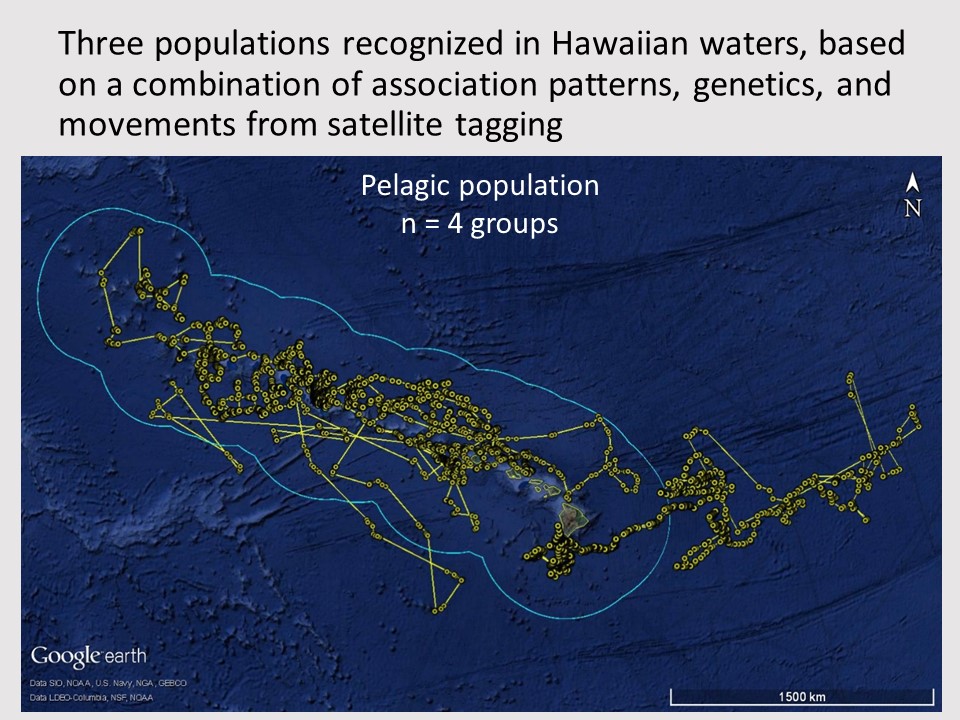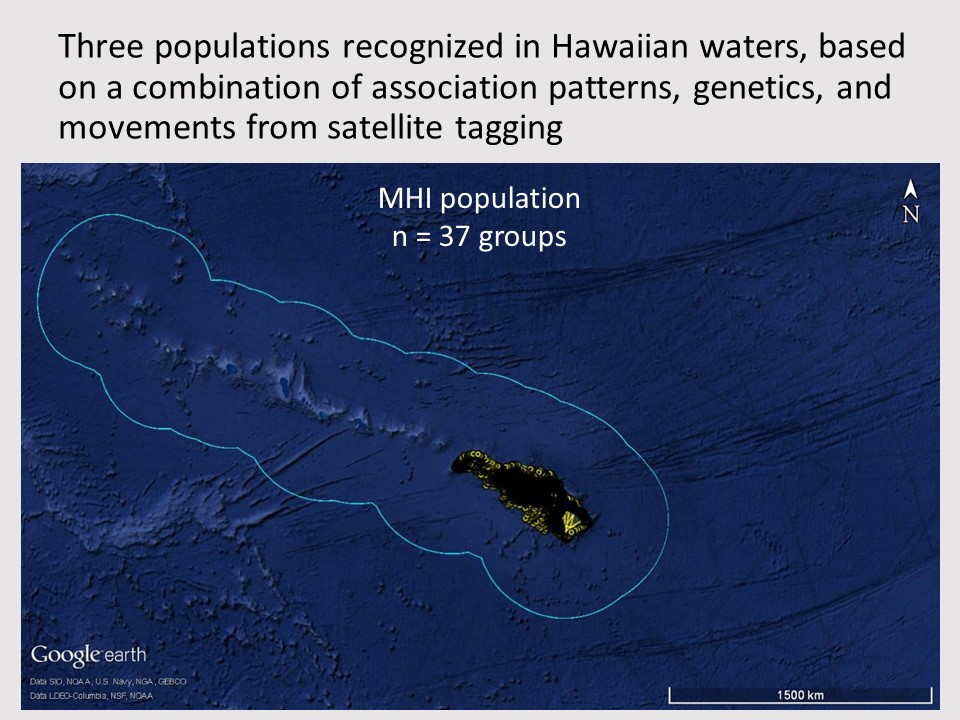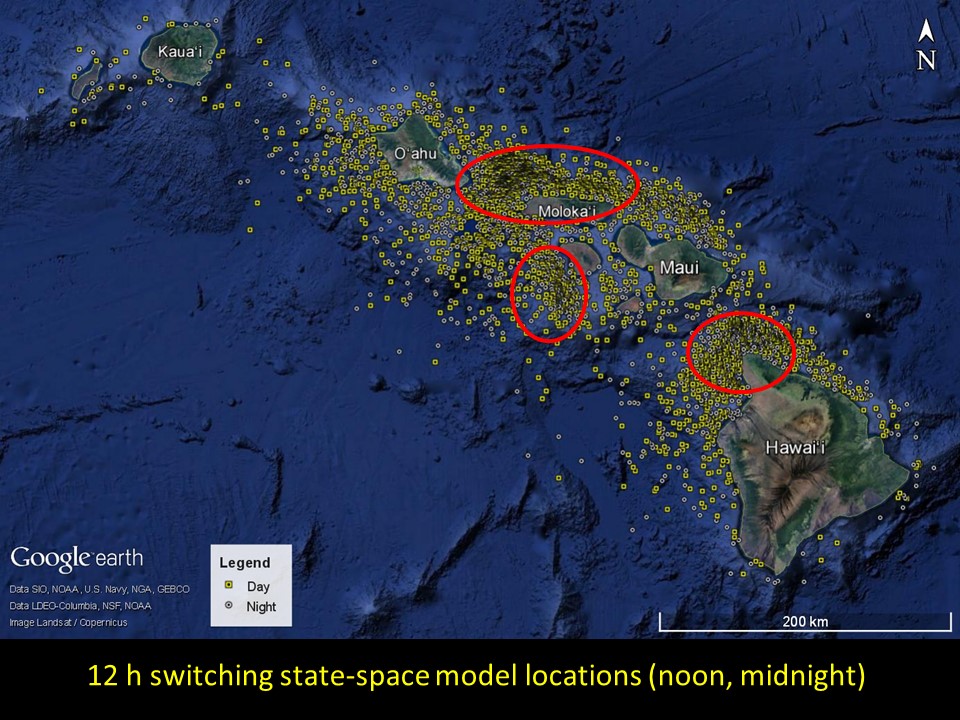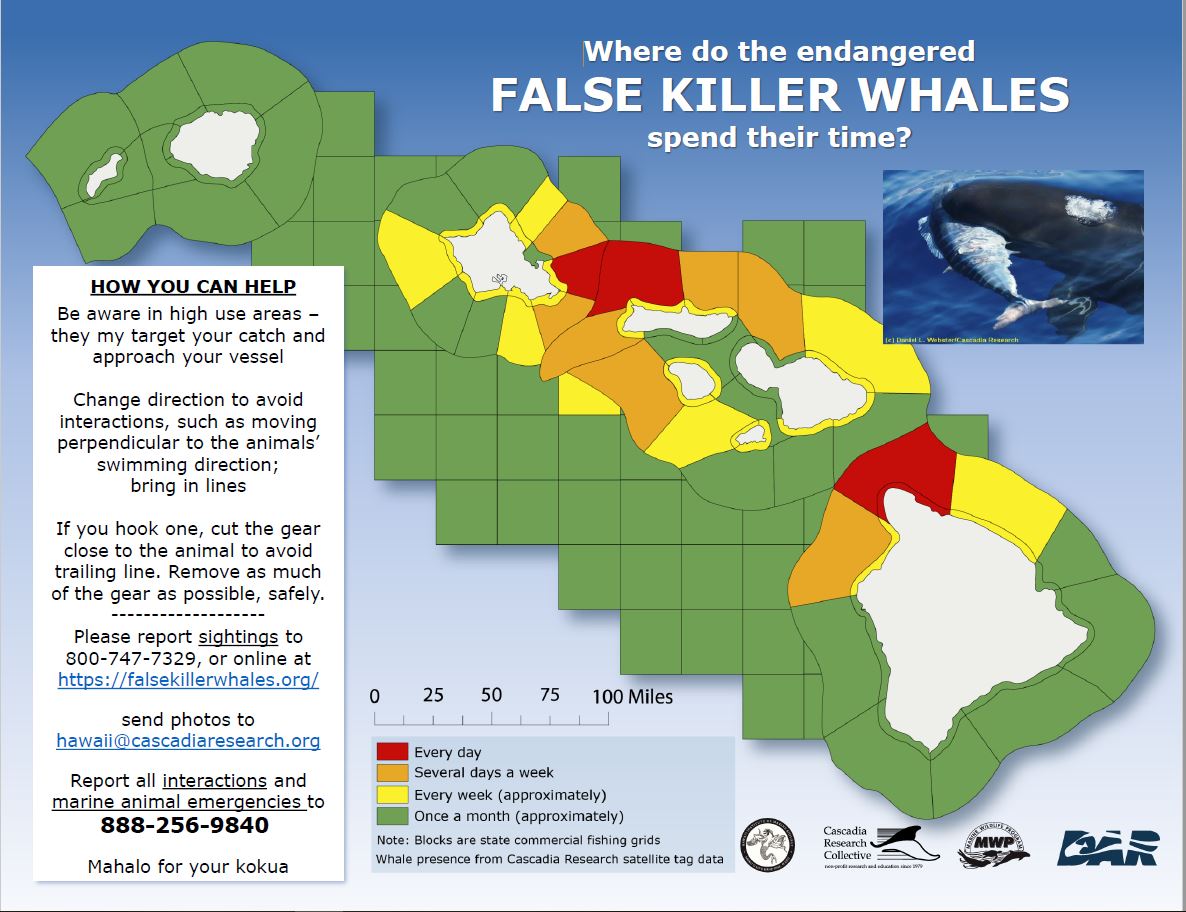There are three populations of false killer whales in Hawaiian waters, based on a combination of association patterns (with each other), genetics, and movements from satellite tagging.
- Pelagic population
- Northwestern Hawaiian Island (NWHI) population
- Main Hawaiian Island (MHI) population
What you see here is the tracks of four tagged animals, each from different group encounters, from the pelagic population.
The blue line is the EEZ – exclusive economic zone – delineation around the Hawaiian Archipelago, extending 200 miles from land in every direction.
The pelagic population is far ranging as you can see by these satellite tag tracks.

The Northwestern Hawaiian Island (NWHI) population’s range overlaps with the waters around Kaua‘i and Ni‘ihau. Unlike the pelagic population (above), the NWHI population is tightly island-associated, or insular. This population is estimated to have approximately 600 individuals.

The Main Hawaiian Island (MHI) insular population is very tightly associated with the islands, remaining within 120 km from shore. This population was listed as Endangered under the Endangered Species Act since 2012 due to significant declines in the population. The current population estimate is approximately 160 individuals.

Satellite tagging data shown here in a 12 hour switching state model, which displays the satellite tagged false killer whales at noon and midnight. In this way, we are able to identify areas of high use. This information was used to create a map of how frequently boaters and fishermen may encounter insular false killer whales, fitted over the State’s commercial fishing reporting area grid.

Cascadia Research Collective
This information was used to create a map of how frequently boaters and fishermen may encounter insular false killer whales, fitted over the State’s commercial fishing reporting area grid. Two outreach maps were created: one for fishermen and one for naturalists.


As part of our work to examine movements and stock structure, in July 2008 we satellite tagged seven Pseudorca from the insular population. This animation shows the movements of five individuals over a 10-day period. Each step in the animation is one set of locations obtained within 10 minutes of each other, and the time intervals between steps average about one hour. The maximum time interval between steps is approximately 12 hours. Lines shown are purely to join consecutive locations for each whale and do not indicate travel routes. For more information on this work see the publication on movements of satellite-tagged Pseudorca. Animation produced by Damon Holzer, Northwest Fisheries Science Center.
[youtube https://www.youtube.com/watch?v=Uc76LN3TBhU?rel=0]
The animation below shows a 52 day track of an adult male Pseudorca from the insular population (HIPc172 in our catalog, an individual previously seen in 2003 off O‘ahu and in 2004 off Hawai‘i Island) satellite tagged in December 2008. Each step in the animation shows 12 hours of movements. This animation illustrates both the extended periods that individuals may remain in one area, and the rapid broad-scale movements among the islands that tagged individuals often make.
[youtube https://www.youtube.com/watch?v=wF9-gx6y5Rc?rel=0]
The animation below shows the tracks of five different Pseudorca satellite-tagged off of O‘ahu in October 2009 as well as four individuals tagged off of island of Hawai‘i in December 2009. The animation goes through the end of January 2010. The O‘ahu individuals were tagged on five different days between October 5 and October 17, while the Hawai‘i individuals were tagged on two different dates (December 10, December 18), thus individuals appear throughout the animation. Once a tag has stopped transmitting the icon representing that individual stops at the location when the last transmission was received. The tags deployed in October transmitted from 11 to 94 days, while those deployed in December lasted from 16 to 105 days (one is still transmitting as of April 2, 2010).
[youtube https://www.youtube.com/watch?v=wF9-gx6y5Rc?rel=0]